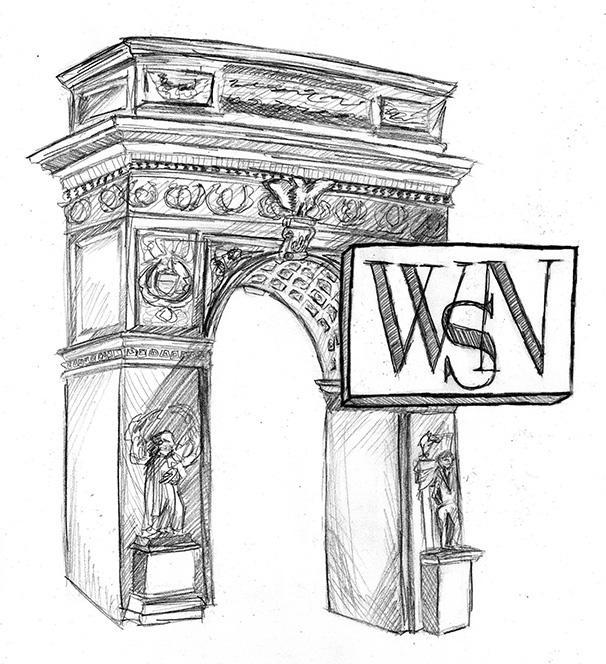On Monday, March 16, NYU President Andrew Hamilton announced the university would be transitioning to online classes due to the spread of the novel coronavirus. On the same day, Hamilton also wrote in a letter to parents that the NYU community is “experiencing something very new and unusual.” Yet, even after petitions from students, as well as a demand for a full tuition reimbursement from the NYU COVID Coalition (consisting of multiple NYU student groups), the university still hasn’t made any steps toward providing any kind of tuition refund. The university is failing to provide any serious financial solution to its students during what President Hamilton himself has deemed an unprecedented situation.
It is important to note that this move to remote classes has lowered the quality of education for many, but especially for those in the Tisch School of the Arts. A number of music majors, for instance, have said that the Zoom platform is insufficient for music-based learning, as the sound quality is sub-standard and lag is common. Other Tisch students have also lost access to facilities such as dance studios and rehearsal spaces that they need and that their tuition money is still paying for. In addition to this, many students must pay extra fees for laboratory and equipment insurance that average $879 per semester. Directors of student projects pay up from $2,000 to $15,000 in additional costs. These are fees the university is still charging students for, even though students don’t have this equipment at home.
This reduction in quality isn’t only limited to programs that rely on hands-on interaction. A 2017 report from the Brookings Institution found that those who take online courses “perform substantially worse than students in traditional in-person courses and that experience in these online courses impact performance in future classes and their likelihood of dropping out of college as well.” A 2019 study from Kent State University found that this issue mainly stems from the fact that students engage in non-course related activities during class. Overall, online classes fail to reach the same standards that are normally achieved in in-person classes.
So, in the transition from in-person to online classes, why is the university still charging students normal tuition when it is obviously providing a lower quality of education?
NYU argues that the university simply loses too much money. In her email to Tisch students on March 22, Tisch Dean Allyson Green wrote that “having to switch to remote learning in the midst of a global pandemic in two weeks is not revenue making in the slightest,” and that the school is losing much more due to the continued payment and maintenance of its facilities. It can be assumed that this is the position of the university as a whole as well. Both President Hamilton and Vice President of Student Affairs Marc Wais didn’t mention the subject in their letters to the student body, which were sent March 16 and March 17, respectively.
The underlying problem with the university and its reasoning is that students and the rest of the NYU community have no choice but to take the administration’s word, since there is little to no transparency with the university. For example, when Dean Green says that Tisch and the university as a whole are losing millions from equipment and facility maintenance, there is no way of knowing whether that information is valid. The university provides no evidence for their decisions, so students and organizations are kept in the dark.
The fact of the matter is that students paid for a semester of in-person classes, not online ones. Currently, undergraduate students are paying an average of around $26,654 for a lower-quality education, but the university refuses to acknowledge the need for tuition reduction. A university has a responsibility to its students, and NYU is failing to meet this standard.
Nevertheless, the university’s efforts during the crisis before March 16 must be commended. Before it decided to evict students from residential housing and to not reimburse tuition after the transition to remote instruction, it was handling the issue reasonably well. A notable example is when it closed global sites relatively quickly, especially in Europe, while providing travel arrangements for students who needed it.
Still, the actions the university took on March 16 — and the ones it didn’t take — showed that these measures don’t go far enough.
Some may argue that tuition refunds are unrealistic. However, partial solutions to tuition refunds during this pandemic aren’t unprecedented among American universities. Stanford has allowed students to take a leave of absence for the spring quarter if individuals don’t want to attend online classes, and has ensured full tuition refunds if they fill out an application by April 5. If a student wishes to take this leave after the deadline, they will still receive a full prorated refund. Meanwhile, the only time NYU has mentioned leave of absences was on Feb. 3 — far before the administration’s decision to transition to online classes. It hasn’t discussed any kind of tuition refunds in conjunction with leave of absences as well. To be clear, this isn’t even close to the policy that should be implemented at NYU — students shouldn’t be forced to leave during the semester in order to be reimbursed for tuition — but it is an acknowledgement of the lower quality of online education and students’ financial needs.
Students are currently paying normal tuition for a semester of subpar online classes. As an institution, NYU has a responsibility to accommodate members of its community and provide a tuition refund policy.
A version of this article appeared in the Monday, March 30, 2020 e-print edition. Email the Editorial Board at [email protected].

























































































































































